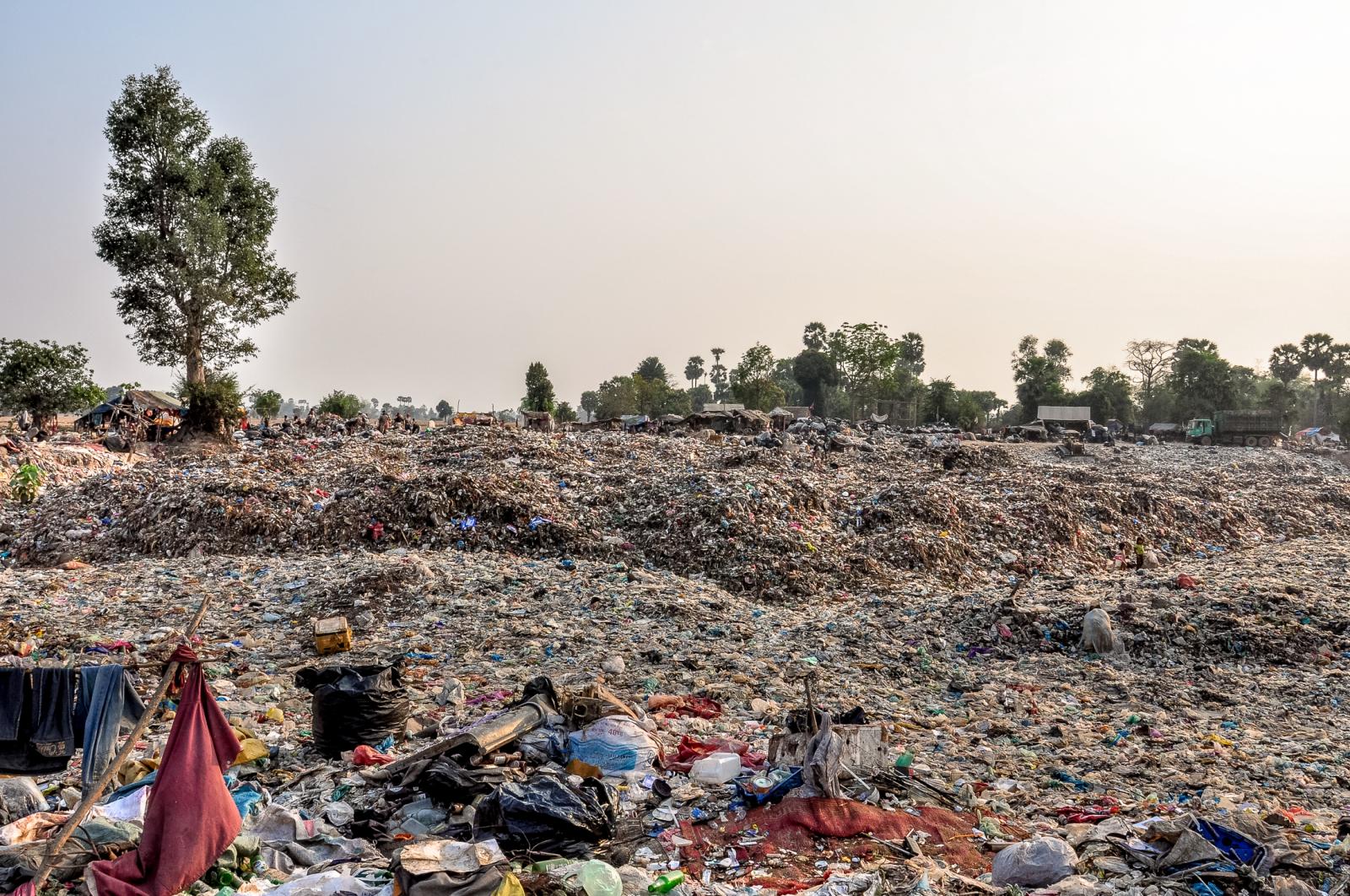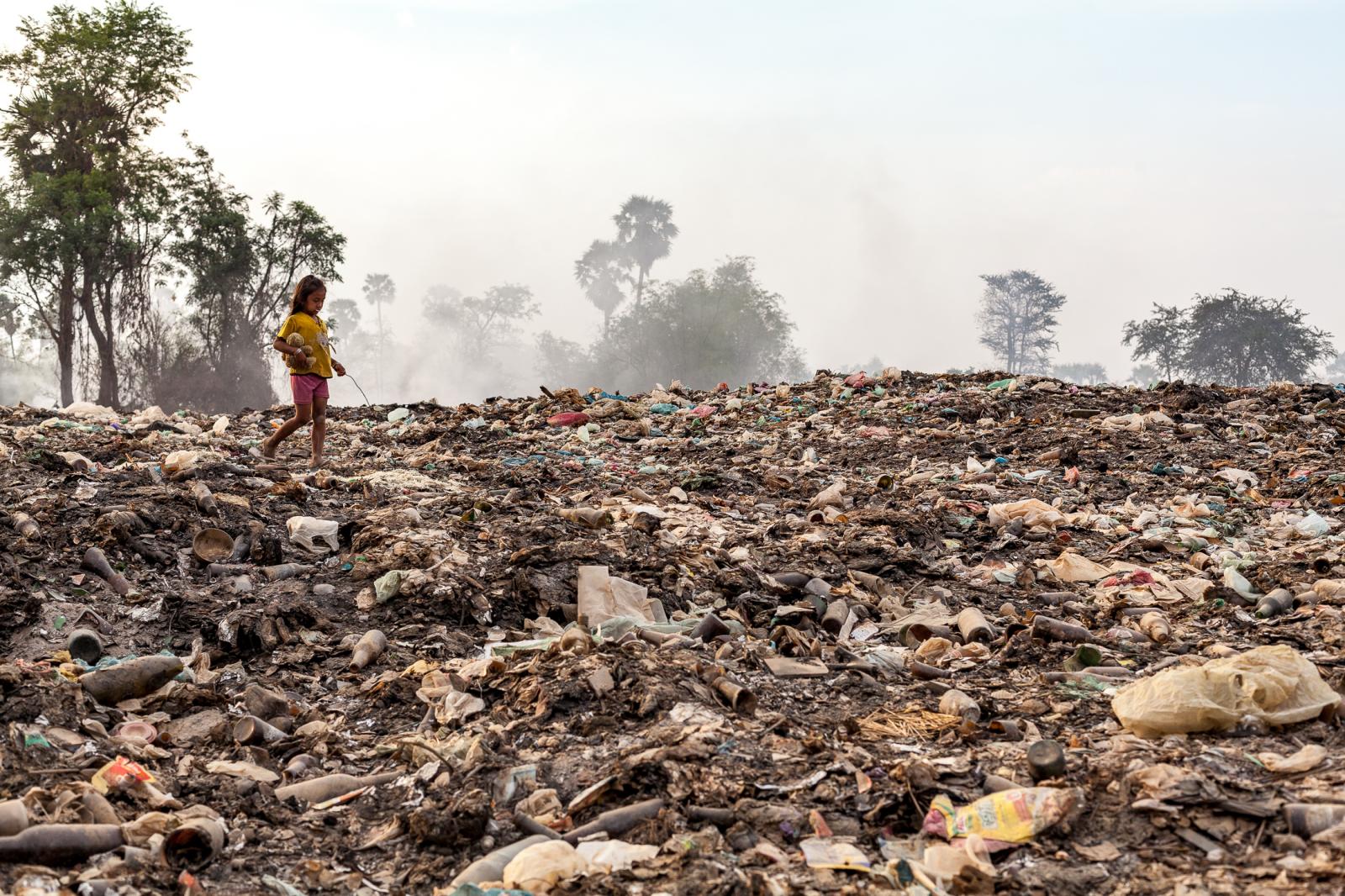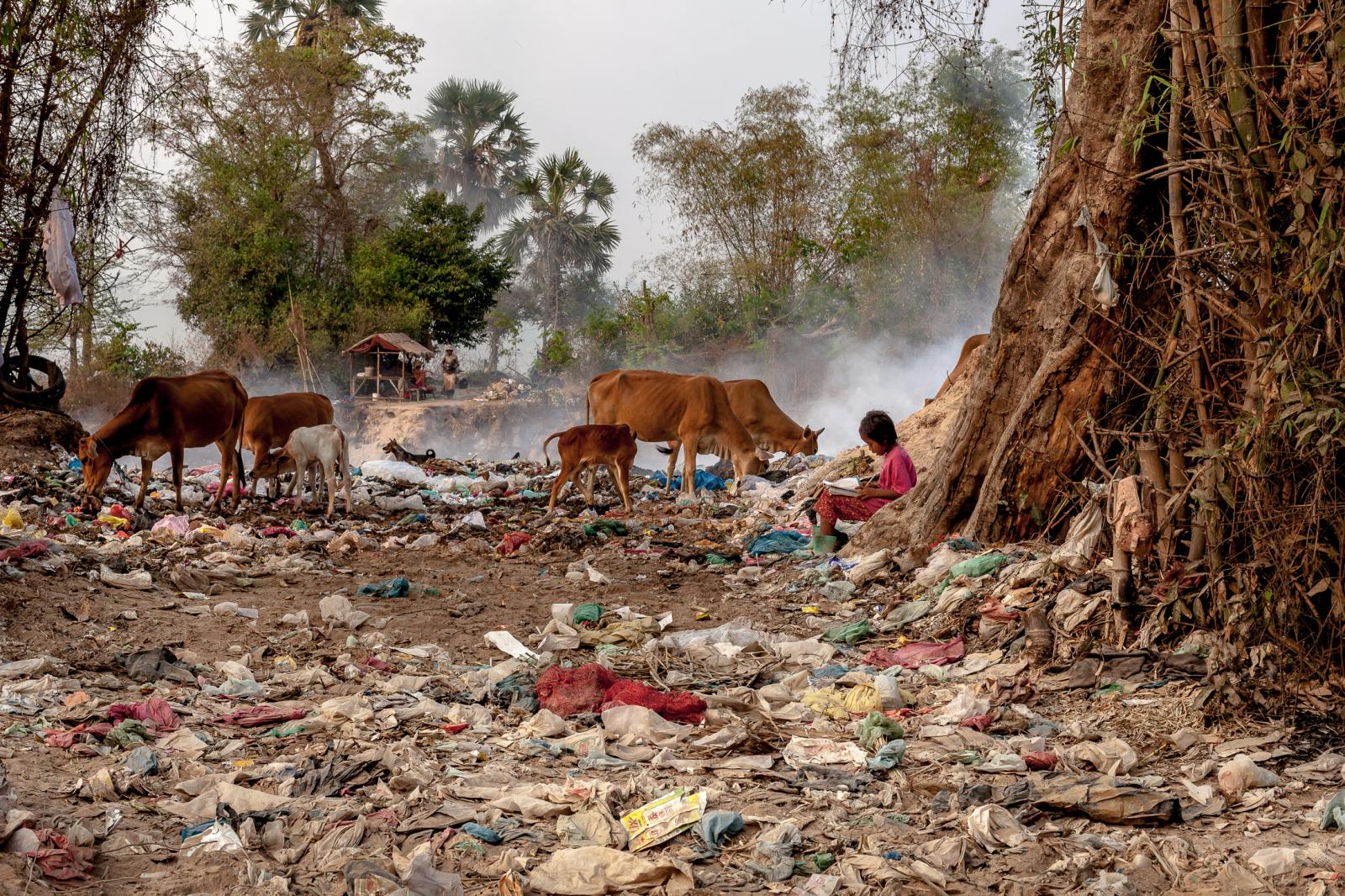Just a few dozen kilometres away from the world-famous Angkor temples, about 300 people have lived for the last three years in a rapidly expanding rubbish dump - fighting the daily realities of extreme poverty.
Since 2010, the situation in the Anlong Pi dump has worsened. An exponential increase in trash discarded in Siem Reap doubled the capacity of the landfill, resulting in harmful chemical and biological reactions between organic and inorganic compounds. These toxic by-products are washed away by rainwater, contaminating soil and groundwater, or emitted into the atmosphere after being burned in the form of gases polluting the air.
Over the past two years, workers at Anlong Pi have begun setting ablaze large areas of waste in order to make space for new rubbish. The combination of these factors has made the air increasingly dangerous for the health of the Anlong Pi residents, who breathe in toxic fumes on a daily basis. The deterioration of air quality is just one of several factors that have gradually made life in Anlong Pi unsuitable for any human being. In recent months, visits by tourists to the dump have increased considerably, turning extreme poverty into a tourist attraction without considering the psychological impact of these visits for the inhabitants of Anlong Pi.
Photography: © Omar Havana. All Rights Reserved
Story published in Al Jazeera English and The Diplomat































